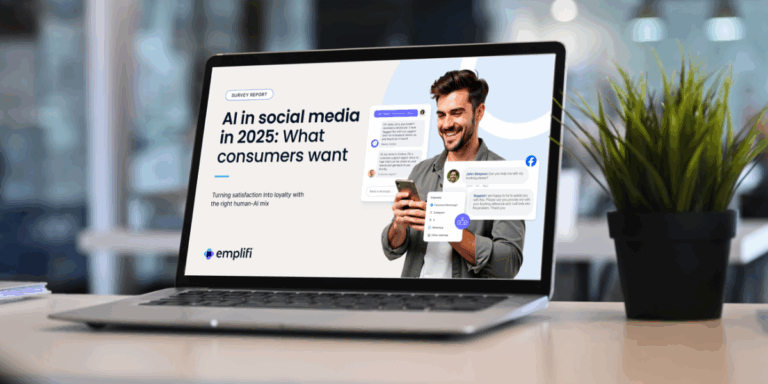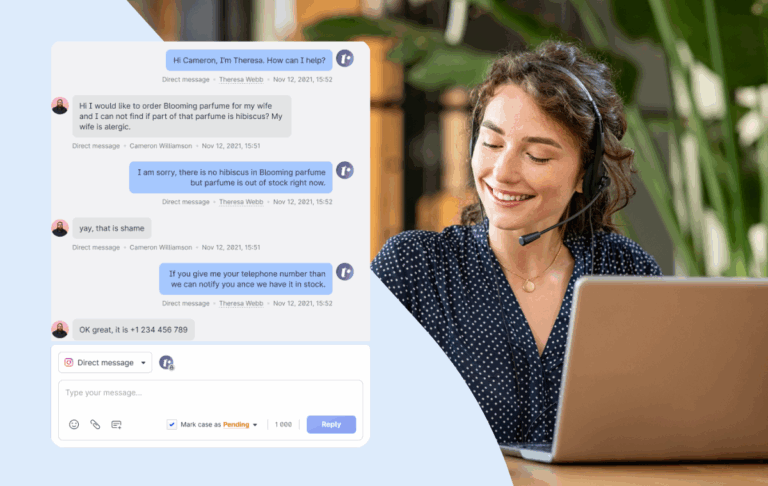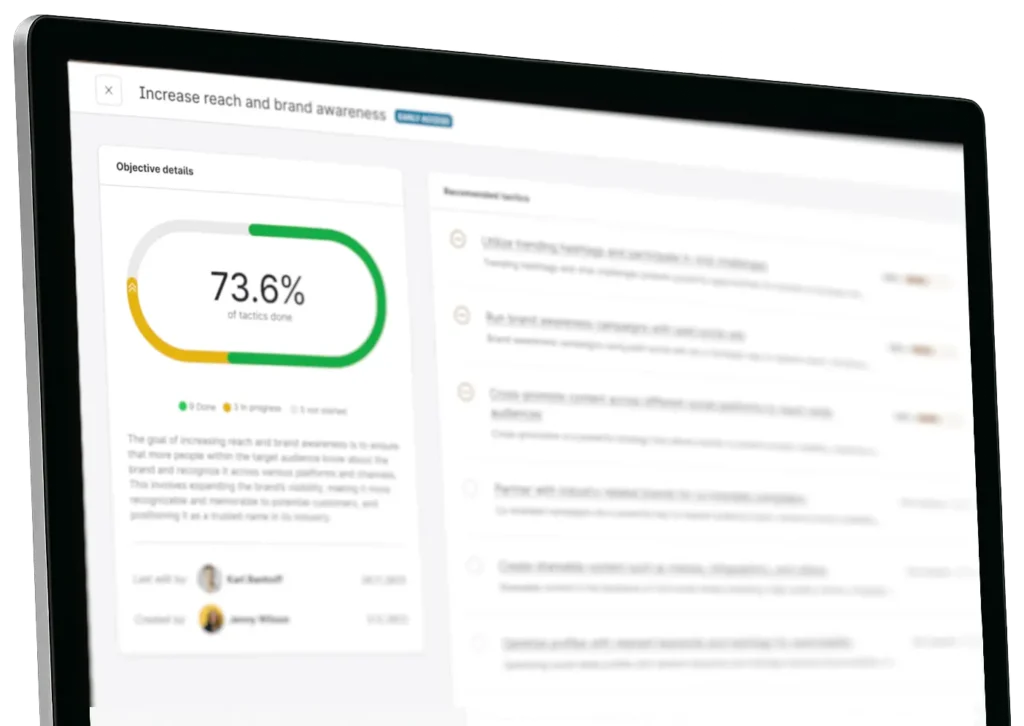Customer service experience: best practices and examples for brands
Gone are the days when brands could compete solely based on price. Today, brands compete largely on the customer experience (CX) they offer. That’s especially true when a customer has a question, complaint, or issue that needs to be resolved through customer service.
Consumers today expect rapid responses to customer service requests and access to answers on their preferred social networks. To meet these expectations, brands must deliver fast, omnichannel performance consistently.
Let’s explore why the customer service experience is so important for your brand, and how to improve it – and, correspondingly, your customer retention numbers
Why customer service experience matters
Today, 49% of consumers say that brands have failed to meet their customer service experience expectations. Yet 87% of marketers report they are doing well with CX. This is what’s called the “customer experience gap,” the disparity between what people expect from their experiences with brands (consumer expectations) and what they actually receive.
The result of the impasse? Customer loyalty is increasingly fickle.
According to Emplifi data, 46% of consumers would leave a brand they were once loyal to after experiencing only two bad experiences. Almost a quarter of shoppers would leave after one.
The good news? Brands that bridge that gap with superior customer experience can gain a significant edge over their competitors.
The ROI of great customer service
The return on customer service investment, a.k.a customer service ROI, is the benefit received from your customer service/support operations minus the cost of the investment.
The value of good customer service is largely qualitative, but there are common indicators of its impact.
These include:
- Increased customer retention
- Customers increasingly promoting your brand’s products organically and becoming brand advocates
- Increased customer loyalty, a strong competitive advantage (especially in industries where products or services are more interchangeable)
Let’s look at a few examples that show the tangible impact of investments that improve the customer service experience.
Freshpet improved customer care and streamlined resources
Challenge: Freshpet faced fierce market competition. Given the thorough research and consideration their target audience puts into each purchase – out of love and responsibility toward their pets – the brand knew it couldn’t afford to lose track of customer service conversations just because the customer switched from Twitter to Instagram. The pet food company wanted a system that allowed customer care teams to interact seamlessly with customers on any platform they use.
Solution: Freshpet deployed a solution that streamlined customer care conversations across multiple touchpoints, including voice, email, chatbots, and social media.
Results: Freshpet improved the quality and efficiency of its customer care, reducing staffing needs while handling a higher volume of inquiries.
Bush Brothers & Company unified customer service data and improved resolution time
Challenge: With more and more customers making service requests on social media, BUSH’S, the iconic baked bean company, realized it needed an omnichannel customer service solution.
Solution: BUSH’s implemented a system that provided unified customer views and in-context guidance, enabling faster issue resolution and stronger loyalty.
Outcome: Bush Brothers achieved faster response times without increasing staff size. The company was also able to gather insights from social media monitoring and communicate more easily, resulting in a 50% decrease in manual resolution time.
Delta Air Lines saved $2 million with an internal customer service app
Challenge: Delta Air Lines needed to find a way to centralize the in-the-moment support its flight attendants provide.
Solution: Delta found a partner to develop a custom app that flight attendants can use on their handheld devices to resolve requests in real time. CRM, video chat, and a customer-facing UI facilitate this support.
Outcome: These solutions have allowed Delta to drive enhancements that matter most to their flight attendants, improve the quality of in-flight customer support, and save over $2 million within the first three years of the program.
Key elements of exceptional customer service experiences
If you pay attention to these elements, you’ll be able to exceed even the highest customer experience expectations.
- Speed of response time. This is the most important factor to optimize, given that about a third of consumers expect a response within an hour to brand tags on social media, DMs, and text messages.
- Personalization. People expect customer service agents, whether human or AI, to know their purchase history and not waste time gathering background information.
- Omnichannel consistency. Customers want to address their concerns on the platform they prefer, rather than switching to another one. It’s vital to ensure that your customer service operations across channels maintain a consistent and connected experience.
- Agent empowerment. Customer service agents should be able to resolve customer issues in the moment, without needing to seek approval. Give your agents the tools and training they need to empower them to provide answers and resolutions on the spot.
- Proactive service. Especially in social media customer service, proactive efforts to resolve issues aid customer retention. Allow your customer service team to reach out to customers they’ve identified with potential problems through your social listening tools.
A holistic customer service strategy tailors the support experience to each individual, offering resources that range from self-service documentation (FAQs, articles, etc.) to live agents, based on the customer’s needs and inquiry.
How to address common customer service experience challenges
The intersection of rising customer expectations with the ubiquity of new technologies presents unique challenges for customer service. Brands need to keep up with customer preferences while preserving efficiency and managing resources smartly.
And the impact of not addressing these challenges directly can be huge. Studies show that each negative interaction a customer experiences requires approximately 12 positive experiences to restore the relationship.
On the other hand, 81% of customers are more likely to buy from a brand after a positive service experience. The more you can anticipate challenges and turn them into advantages, the more customer loyalty you’ll earn.
Here are some of the most common customer service challenges and how to address them.
1. AI integration challenges
Problem: AI can help streamline customer service operations, but organizations face multiple challenges with its implementation. Many service teams lack the technical literacy needed for effective AI collaboration. Customer resistance remains significant, with 67% wanting a person (rather than AI) to respond when they contact a brand on social media, while 52% think AI feels inauthentic.
Meanwhile, conversations about AI ethics – including bias, transparency, and maintaining empathy in AI-assisted service – are ongoing.
Solution: Implement phased AI adoption alongside comprehensive training programs for service teams. Create clear escalation paths that route the customer to a human agent for complex issues, such as those that require empathy or judgment. Establish ethical organizational guidelines for AI deployment, with regular audits to ensure alignment with brand values and customer expectations.
2. Data privacy and security concerns
Problem: Businesses must comply with evolving data privacy regulations, such as GDPR and CCPA, but if not implemented thoughtfully, compliance can create friction in customer experience flows.
Brands also need to protect customer data and ensure customers trust their stewardship over it. Data breaches can cause lasting damage to a company’s reputation, with 60% of consumers reporting that they would stop doing business with a company after a single breach has occurred.
Solution: Implement privacy-by-design principles in all service systems and interactions. Create transparent data usage policies that prioritize customer control over personal information. Perform security audits and updates across all service channels and scrutinize third-party integrations
3. Cross-channel consistency gaps
Problem: Modern customers interact across an expanding array of touchpoints, and they expect that when they share their information in one medium, it will be remembered in another.
For example, if a customer emails about an issue, they want that information to be available when they chat with an agent on Instagram about their account. Seventy-three percent of customers report significant irritation when they are forced to repeat information when switching from one platform to another. To make matters worse, teams and resources are stretched thin across a growing number of channels.
Solution: Deploy unified customer profiles for your customer service agents that are accessible across all service channels, ensuring context is preserved and empowering agents to pick up where the customer left off, no matter the platform. Establish consistent service standards that adapt to channel-specific contexts while maintaining overall brand experience. Consider proactive training programs for emerging channels before they become mainstream, so your team is prepared to interact on new platforms.
4. Agent burnout and retention challenges
Problem: The human element remains critical for customer service, despite technological advances. While self-service options handle simple issues, agents face growing complexity in their daily interactions. Teams face pressure to evolve both technical and soft skills, while remote and hybrid work arrangements create new challenges for maintaining connection and culture.
Solution: Tailor wellness programs to the needs of service professionals. Offer career advancement pathways that recognize both technical and emotional intelligence skills. Establish success metrics that go beyond speed and volume to include quality measures, reducing the pressure on agents to sacrifice service quality for efficiency.
How to get actionable feedback on your customer service experience
The best way to measure the success of your customer service experience program and identify improvements is to ask your customers about it directly. There are several metrics from customer surveys you can track internally to paint a full picture of how your brand’s customer service experience is landing with customers.
The following metrics have proven most valuable for evaluating the performance of customer service experiences.
Customer Satisfaction Score (CSAT)
CSAT measures a customer’s immediate satisfaction with a specific interaction, typically on a scale of 1 to 5 or 1 to 10. It’s often deployed as a short survey to the customer following phone, chat, or email customer service. CSAT provides granular feedback on individual touchpoints, making it excellent for pinpointing specific areas for improvement in the service journey. The current industry benchmark for CSAT across industries is 78%, with top-performing organizations achieving 85% or higher.
Net Promoter Score (NPS)
NPS measures loyalty with a simple, one-question survey emailed to customers, asking how likely they are to recommend your company to others on a scale of 0 to 10. Responses are categorized as Detractors (0-6), Passives (7-8), or Promoters (9-10). NPS has the strongest correlation with business growth, with companies achieving 20% higher growth rates when they improve their NPS by 7 points.
The average NPS across industries is +32, though this varies significantly by sector and region.
Customer Effort Score (CES)
CES measures the ease of resolving an issue or completing a transaction, typically on a scale of 1 to 7, from “very difficult” to “very easy.” CES has gained prominence as research shows that reducing customer effort is 40% more predictive of loyalty than increasing delight. In fact, 96% of customers become more disloyal after high-effort experiences. Organizations should aim for an average CES of 5.6 or higher to remain competitive.
First Contact Resolution (FCR)
FCR measures the percentage of customer issues resolved during the initial interaction, without requiring follow-ups or transfers. FCR significantly impacts operational efficiency and customer satisfaction. Each 1% improvement in FCR correlates to a 1% improvement in CSAT. Leading organizations achieve FCR rates of 74-80%, though rates vary by channel, with voice typically performing better than digital channels.
Average Resolution Time (ART)
ART is an internal calculation that doesn’t come from survey data. It averages the total time from when an issue is reported until it is fully resolved, including all interactions and wait periods. ART directly influences customer perception of service quality, with 45% of customers expecting issues to be resolved on first contact. Industry benchmarks vary widely by sector and issue type, ranging from minutes for simple inquiries to days for complex technical problems.
Final thoughts on customer service experiences
Customer service experience has evolved from a support function to a critical, competitive differentiator. Excellence in service delivery – or lack thereof – directly impacts retention, loyalty, and revenue growth. Organizations that excel in this area balance technological capabilities, such as AI, omnichannel integration, social customer care tools and unified data, with human elements, like agent empowerment, while maintaining strict privacy and security standards.
The most successful customer service strategies focus on reducing customer effort, measuring performance through complementary metrics (CSAT, NPS, CES, FCR, ART), and adapting proactively to emerging challenges. By transforming service interactions from cost centers to value creators, brands can close the customer experience gap that continues to frustrate nearly half of all consumers, turning service excellence into a sustainable competitive advantage.




















